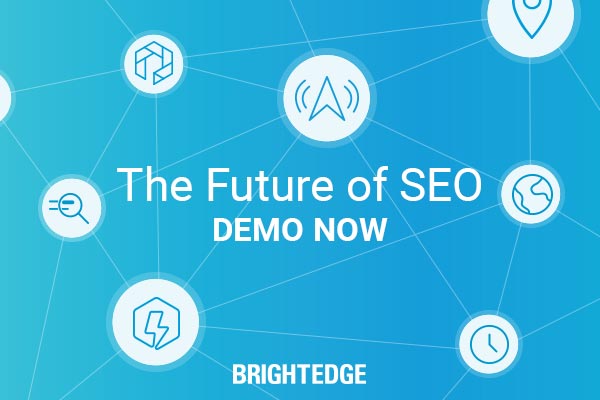Chad Hallert of Noble Studios wrote a guest post on the value of an integrated search strategy. To learn more from Chad's insights, join us at Share16 to hear him speak live on October 26.
Let’s face it: if you’re like the majority of companies out there, you’re probably managing your SEO and SEM efforts from two distinct groups within your company. And at first glance, it probably seems to have worked just fine for you in the past. Yet, it’s hard to overlook the huge fact that organic and paid listings are displayed to the same searchers and are often both interacted with prior to a customer converting during their buyer’s journey.
Maybe it’s time to ask: why are we managing them separately?
Typically, companies and agencies are structured in such a way that separates these two different marketing approaches by skillset - putting the uber-competitive number crunchers and direct response marketers in charge of paid search. These teams look at ROIs and focus on constantly tweaking the system in order to get an incremental lift in results. On the SEO side, you have the more technical and content-focused (hopefully both) long-game players focusing on site crawlability, content optimization, schema, earned links, keywords, and other organic content boosting efforts.
The result is that the “integrated approach” we all speak about really means nothing more than combining SEO and SEM results into a single report. In 2016 that’s no longer sufficient. A true integrated search strategy means data, process, and people integration. We will discuss how to do it at Share16.
Silos Don’t Work: The Integrated Search Strategy Value
First, it’s important to look at why the silo approach is no longer viable. One example of this is the keyword discovery process. What we often see is that there is a robust process around keyword discovery from an SEO standpoint, resulting in hundreds of viable keywords with the identification of new keywords based on semantic similarity. This is an amazing deliverable that helps prioritize optimization of current content as well as future content creation.
For paid search campaigns, we generally see a much different process. Oftentimes, there’s a small seed list of keywords that are entered into AdWords at which point the marketer will rely exclusively on Google’s keyword suggestions and Keyword Planner tool to recommend additional keywords.
Organic vs. Paid
Is the SEO process that much better? In reality, they both have pros and cons. Let’s review a few of them and discern which should be combined into a single keyword discovery process for both SEO and SEM.
- You can still read better than Google: Don’t trust Google to tell you all of the keywords you should be targeting.
- Do your homework: What are your competitors ranking for that you are not? Leverage great tools like BrightEdge’s Data Cube to unlock niche keywords that provide content creation opportunities for SEO as well as attractive terms to advertise on with paid search.
- Better prioritize your efforts. How are you prioritizing which search terms to focus SEO and SEM on? Search volume? Search volume + your personal opinion of the keywords value? The max CPC bid data provided in AdWords can provide a valuable guide to which versions of search terms are producing the best results for others. See two versions of a keyword that are similar with one having a max bid 3x higher? This may be an opportunity to focus your SEO efforts on the more expensive and better performing keyword.
- Action is best. To catch a fish you have to have your hook in the water. The AdWords Keyword Planner does provide you with quick inputs that are generally high quality. This tool creates a seed list for you to start your SEO keyword discovery. If you find some no-brainer terms, go advertise them while you are developing the more robust list.
Extra Credit: As a recent BrightEdge blog post discussed, keywords that are focused on a purchase intent are much more likely to see 4 paid ads at the top of the SERPs. This decreases your overall SEO opportunity. Document the position of the keyword in the buyer’s journey during your keyword discovery to know which strategy offers the greatest likelihood of impact. BrightEdge’s now builds this process directly into Data Cube.
Mobile-First?
A fair question that often comes up often is whether taking a mobile-first mindset alters the integrated search strategy approach you should take.
In short, no. We know that roughly 62 percent of SERP rankings differ from mobile to desktop, and that the way ads are presented to these audiences differ slightly from each other. The BrightEdge platform is designed to help you with this. The key is segmentation. By evaluating SEO success individually for both mobile and desktop, you can uncover the fact that your content resonates better with audiences on a certain device type that you didn’t expect. Breaking out both marketing approaches and isolating their performance on each device can give you an even clearer picture of how users are interacting with your content.
In the end, a truly integrated search strategy simply translates to better results.
When working with a large West Coast destination marketing client on its digital presence, we were tasked with providing clarity and guidance to visitors looking for the perfect place to shop, eat, and stay during their visit.
Rather than logging only page visits, we monitored how users interacted with different sections of the site. We implemented JavaScript to track outbound links for partner stakeholder referrals to show financial impact of the SEO traffic. Next, we identified which SERPS had considerable “noise” above the fold from universal listings. In those cases, we implemented more aggressive bids in AdWords. Simultaneously, we evaluated which keywords had both the top paid and organic position. In situations where competition was low and the top organic spot had plenty of visibility, we lowered our max CPC to free up budget.
Through this approach our client has doubled its paid search traffic while maintaining a flat budget. Through an integrated strategy, our efforts helped boost organic search traffic by 111 percent over the previous year.
Bringing It All Together
At my session at Share16 you will have a better understanding of how user intent impacts your SEO and SEM potential on the SERPs.
Share 16 represents a great opportunity for diving into the hottest topics of conversation, including integrated search strategy, with some of the greatest minds in the tech software industry. Exchange ideas, learn, and excel in online marketing when you come to this event.
My session will focus on:
- Using earned organic keyword rankings as a starting point for SEM campaigns
- How to use paid search cost data as a guiding light for SEO priority
- Developing an understanding of how to interpret the interplay between your organic and paid listings
- Mastering the process to unlock even greater efficiencies
We look forward to seeing you at Share16 and my session on Wednesday Oct. 26th. If you have not registered yet, visit the event page to learn more about how the conference can help drive digital marketing performance.
